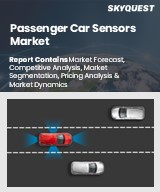
|
시장보고서
상품코드
1835634
광학식 위치 센서 시장 : 센서 유형, 기술, 출력 유형, 용도, 최종 용도 산업별 - 세계 예측(2025-2032년)Optical Position Sensors Market by Sensor Type, Technology, Output Type, Application, End Use Industry - Global Forecast 2025-2032 |
||||||
광학식 위치 센서 시장은 2032년까지 CAGR 9.89%로 62억 9,000만 달러로 성장할 것으로 예측됩니다.
| 주요 시장 통계 | |
|---|---|
| 기준연도 2024 | 29억 6,000만 달러 |
| 추정연도 2025 | 32억 5,000만 달러 |
| 예측연도 2032 | 62억 9,000만 달러 |
| CAGR(%) | 9.89% |
광학식 위치 센서에 대한 간결한 설명과 다양한 산업에서 정밀 센싱을 재구성하는 수렴하는 기술력
광학 위치 센서는 기술, 용도 수요, 공급망 재조합 수렴력으로 인해 가속화된 차별화의 시기를 맞이하고 있습니다. 물리적 움직임과 위치를 전기 신호로 변환하는 광학식 위치 센서는 현재 고정밀 산업용 로봇부터 민수용 웨어러블, 자동차용 첨단운전자보조시스템(ADAS)까지 다양한 시스템을 지원하고 있습니다. 시스템의 고정밀화, 저지연화, 환경변화에 대한 내성 향상이 요구되는 가운데, 센서 기술과 이를 지원하는 생태계는 빠르게 적응하고 있습니다.
오늘날 시장 특징은 획일적인 센싱에서 광학 센싱과 임베디드 신호 처리 및 디지털 연결을 결합한 모듈식 용도별 솔루션으로 이동하고 있다는 점입니다. 이러한 변화는 특히 공간, 전력 소비, 비용에 민감한 소비자 기기에서 제조 가능성과 통합 제약에 대한 관심 증가와 함께 설계 의사결정을 지배하고 있습니다. 이와 함께 산업 및 의료용 용도에서는 신뢰성, 규제 준수 및 장기적인 유지보수성이 중요시되고 있습니다.
결과적으로 제품 팀과 조달 부서는 공급 위험, 통합의 복잡성, 총소유비용을 관리하면서 엄격한 성능 요구 사항을 충족하는 센서 기술을 선택해야 하는 상충되는 요구 사항의 균형을 맞추어야 합니다. 기술 노드가 진화하고 새로운 광학 기술이 등장함에 따라 이해관계자들은 투자의 우선순위를 정하고 센서 성능을 시스템 수준의 성능 목표에 맞추기 위해 효과적인 비교 인사이트에 점점 더 의존하게 될 것입니다.
기술 소형화, 임베디드 인텔리전스, 멀티모달 센서 융합이 광학 위치 감지 용도과 공급업체의 우위를 재정의하는 방법
광학 위치 센서의 환경은 경쟁 우위와 제품 로드맵을 재정의하는 형태로 변화하고 있습니다. 포토닉스, 마이크로 광학 및 반도체 제조의 발전으로 부품의 실적와 전력 소비가 감소하고 새로운 폼팩터와 임베디드 가능성이 가능해졌습니다. 동시에 온센서 처리와 디지털 출력의 통합으로 센서는 수동적인 변환기에서 전처리, 오류 수정, 안전한 데이터 전송이 가능한 지능형 노드로 변모했습니다.
자동차 및 항공우주 분야에서는 기능적 안전성과 이중화 요구로 인해 진단 기능과 내결함성 아키텍처가 강화된 광학식 인코더와 반사형 광학 센서의 채택이 가속화되고 있습니다. 한편, 가전기기 및 웨어러블 기기에서는 광전위계 및 소형 스루빔 센서를 최적화하고 사용자 경험을 저하시키지 않으면서 저전력으로 컴팩트하게 통합하는 것이 요구되고 있습니다. 산업 자동화에서 로봇과 CNC 기계가 더 높은 해상도와 반복 정밀도를 요구함에 따라 공급업체는 광학 인코더의 설계를 개선하고 결정론적 제어 요구 사항을 충족하기 위해 절대 및 증분형 인코더를 모두 제공합니다.
또 다른 혁신적인 동향은 멀티모달 센싱과 센서 융합으로의 전환입니다. 시스템 설계자들은 광학식 위치 센서를 관성 측정 장치, 마그네틱 인코더 또는 정전식 소자와 결합하여 열악한 환경에서도 견고성을 구현하는 경향이 증가하고 있습니다. 이러한 융합을 통해 이전에는 복잡한 기계식 캘리브레이션과 큰 폼팩터가 필요했던 용도이 가능해졌습니다. 그 결과, 통합 솔루션과 강력한 소프트웨어 툴체인을 제공할 수 있는 공급업체는 불균형적인 가치를 얻을 수 있는 반면, 개별 부품의 성능에 집중하는 공급업체는 상품화의 위험에 노출될 수 있습니다.
미국의 새로운 관세 조치가 광학 위치 센서 프로그램의 조달, 제조 현지화, 공급업체 리스크 관리에 미치는 연쇄적 영향
2025년 미국에서 새로운 관세 및 무역 조치가 도입되면서 광학 위치 센서 생태계 전반에 걸쳐 조달 전략과 제품 비용 구조에 대한 재평가가 이루어지고 있습니다. 관세 중심의 수입 비용으로 인해 부품 및 완제품 모듈의 조달 계산이 바뀌면서 OEM 및 수탁제조업체는 니어쇼어링, 지역 공급업체 다변화, 대체 공급처의 적격성 평가, 위험 완화 및 프로그램 마진 유지 등의 노력을 기울여야 합니다.
이러한 정책 전환으로 공급망 투명성과 현지 생산 능력에 대한 관심이 높아지고 있습니다. 각 지역에 제조 거점을 보유한 기업이나 국내 공급업체와 협력 관계를 구축한 기업은 생산 일정의 적응과 리드타임 관리가 용이합니다. 반대로 장거리 공급망에 크게 의존하는 기업은 상륙 비용 증가와 물류 불확실성 증가라는 이중고에 직면하여 재고 전략과 운전 자본에 영향을 미치고 있습니다.
관세 압력에 대응하기 위해 많은 이해관계자들은 공급업체 인증 프로세스, 이중 소싱 전략, 관세 영향을 받는 부품에 대한 의존도를 낮추기 위한 제조 가능 설계 조정에 대한 투자를 가속화하고 있습니다. 또한 조달팀은 관세 전가에 대응하는 조항을 포함하도록 장기 계약을 재협상하고, 전략적 공급업체와 공동 비용 절감 프로그램을 모색하고 있습니다. 이러한 대응을 종합하면 프로그램 관리자와 구매 리더는 공급업체 리스크, 총비용 고려, 제조 능력의 전략적 배치에 대한 접근 방식을 재구성하고 있습니다.
센서 유형, 기술, 출력, 용도, 최종 사용 산업, 실용적인 엔지니어링 및 상업적 트레이드오프에 대한 세분화 중심의 세부적인 시각을 제공
세분화는 실용적인 프레임워크를 제공하고, 기술 선택을 용도의 성능과 상업적 성과로 변환하는 실용적인 프레임워크를 제공합니다. 센서의 유형에 따라 시장은 움직이는 요소와 기계적으로 인터페이스하는 접촉식 센서와 물리적 접촉 없이 광학적인 상호 작용에 의존하는 비접촉식 센서로 구분합니다. 기술별로 보면 광학 인코더, 광학 전위차계, 반사형 광학 센서, 스루빔 광학 센서의 각 제품군은 해상도, 견고성, 통합의 복잡성에서 서로 다른 트레이드오프를 제공합니다. 광학식 인코더 중에서도 절대형과 증분형은 초기화, 오류 복구, 제어 루프 설계와 관련된 시스템 레벨의 동작이 다릅니다.
자주 묻는 질문
목차
제1장 서문
제2장 조사 방법
제3장 개요
제4장 시장 개요
제5장 시장 인사이트
제6장 미국 관세의 누적 영향 2025
제7장 AI의 누적 영향 2025
제8장 광학식 위치 센서 시장 : 센서 유형별
- 접촉
- 비접촉
제9장 광학식 위치 센서 시장 : 기술별
- 광학식 인코더
- 절대
- 증분
- Optical Potentiometer
- 반사형 광센서
- 투과형 광센서
제10장 광학식 위치 센서 시장 : 출력 유형별
- 아날로그
- 디지털
제11장 광학식 위치 센서 시장 : 용도별
- 항공우주 및 방위
- 자동차
- ADAS(첨단운전자보조시스템)
- 인포테인먼트
- 파워트레인
- 가전
- 카메라
- 스마트폰
- 웨어러블
- 헬스케어
- 진단 장비
- 환자 모니터링
- 수술 기구
- 산업 자동화
- CNC 머신
- 포장기계
- 로봇 공학
제12장 광학식 위치 센서 시장 : 최종 용도 산업별
- 항공우주 및 방위
- 자동차
- 소비재
- 제조업
- 의학
제13장 광학식 위치 센서 시장 : 지역별
- 아메리카
- 북미
- 라틴아메리카
- 유럽, 중동 및 아프리카
- 유럽
- 중동
- 아프리카
- 아시아태평양
제14장 광학식 위치 센서 시장 : 그룹별
- ASEAN
- GCC
- EU
- BRICS
- G7
- NATO
제15장 광학식 위치 센서 시장 : 국가별
- 미국
- 캐나다
- 멕시코
- 브라질
- 영국
- 독일
- 프랑스
- 러시아
- 이탈리아
- 스페인
- 중국
- 인도
- 일본
- 호주
- 한국
제16장 경쟁 구도
- 시장 점유율 분석, 2024
- FPNV 포지셔닝 매트릭스, 2024
- 경쟁 분석
- Honeywell International Inc.
- TE Connectivity Ltd.
- Infineon Technologies AG
- STMicroelectronics N.V.
- Texas Instruments Incorporated
- Broadcom Inc.
- ams OSRAM AG
- NXP Semiconductors N.V.
- Renesas Electronics Corporation
- Sensata Technologies Holding plc
The Optical Position Sensors Market is projected to grow by USD 6.29 billion at a CAGR of 9.89% by 2032.
| KEY MARKET STATISTICS | |
|---|---|
| Base Year [2024] | USD 2.96 billion |
| Estimated Year [2025] | USD 3.25 billion |
| Forecast Year [2032] | USD 6.29 billion |
| CAGR (%) | 9.89% |
A concise orientation to optical position sensors and the converging technological forces reshaping precision sensing across diverse industries
The optical position sensor landscape is undergoing a period of accelerated differentiation driven by converging forces in technology, application demand, and supply chain realignment. Optical position sensors, which translate physical movement or position into electrical signals, now underpin a broad spectrum of systems from high-precision industrial robotics to consumer wearables and automotive advanced driver assistance systems. As systems demand higher accuracy, lower latency, and greater resilience to environmental variables, sensor technologies and their supporting ecosystems are adapting rapidly.
Today's market is characterized by a move away from one-size-fits-all sensing toward modular, application-specific solutions that combine optical sensing with embedded signal processing and digital connectivity. This shift is accompanied by increased attention to manufacturability and integration constraints, particularly in consumer devices where space, power consumption, and cost sensitivity dominate design decisions. In parallel, industrial and medical applications emphasize reliability, regulatory compliance, and long-term serviceability.
Consequently, product teams and procurement functions must balance competing imperatives: selecting sensor technologies that meet stringent performance requirements while managing supply risk, integration complexity, and total cost of ownership. As technology nodes evolve and new optical techniques emerge, stakeholders will increasingly rely on validated comparative insight to prioritize investments and match sensor capabilities to system-level performance targets.
How technological miniaturization, embedded intelligence, and multi-modal sensor fusion are redefining optical position sensing applications and supplier advantage
The landscape for optical position sensors is shifting in ways that redefine competitive advantage and product roadmaps. Advancements in photonics, micro-optics, and semiconductor fabrication have reduced component footprints and power consumption, enabling new form factors and embedding possibilities. Concurrently, the integration of on-sensor processing and digital outputs has transformed sensors from passive transducers into intelligent nodes capable of pre-processing, error correction, and secure data transmission.
In automotive and aerospace domains, the demand for functional safety and redundancy has accelerated adoption of optical encoders and reflective optical sensors with enhanced diagnostics and fault-tolerant architectures. Meanwhile, consumer electronics and wearables are pushing suppliers to optimize optical potentiometers and miniature through-beam sensors for low power and compact integration without compromising user experience. Industrial automation has seen robotics and CNC machines require higher resolution and repeatability, prompting suppliers to refine optical encoder designs and to offer both absolute and incremental variants to meet deterministic control requirements.
Another transformative trend is the migration toward multi-modal sensing and sensor fusion. System designers are increasingly combining optical position sensors with inertial measurement units, magnetic encoders, or capacitive elements to achieve robustness in challenging environments. This convergence is enabling applications that previously required complex mechanical calibration or large form factors. As a result, suppliers that can deliver integrated solutions and robust software toolchains will capture disproportionate value, while those that remain narrowly focused on discrete component performance risk commoditization.
The cascading consequences of new US tariff measures on sourcing, manufacturing localization, and supplier risk management for optical position sensor programs
The introduction of new tariffs and trade measures in the United States in 2025 has prompted a reassessment of procurement strategies and product cost structures across the optical position sensor ecosystem. Tariff-driven import costs have altered the calculus for sourcing components and finished modules, compelling OEMs and contract manufacturers to evaluate nearshoring, regional supplier diversification, and qualification of alternative supply sources to mitigate exposure and preserve program margins.
These policy shifts have heightened the focus on supply chain transparency and localized manufacturing capabilities. Companies with regional manufacturing footprints or established partnerships with domestic suppliers have found it easier to adapt production schedules and to manage lead times. Conversely, organizations heavily reliant on long-distance supply chains have confronted the dual challenge of increased landed costs and greater logistical uncertainty, which has implications for inventory strategies and working capital.
In response to tariff pressures, many stakeholders are accelerating investments in supplier qualification processes, dual sourcing strategies, and design-for-manufacturability adjustments that reduce dependency on tariff-impacted components. Additionally, procurement teams are renegotiating long-term contracts to include clauses addressing tariff pass-through and seeking collaborative cost-reduction programs with strategic suppliers. Taken together, these responses are reshaping how program managers and purchasing leaders approach supplier risk, total cost considerations, and the strategic placement of manufacturing capacity.
A detailed segmentation-driven view linking sensor types, technologies, outputs, applications, and end-use industries to practical engineering and commercial trade-offs
Segmentation provides a pragmatic framework to translate technology choices into application performance and commercial outcomes. Based on sensor type, the market distinguishes between contact sensors that interface mechanically with moving elements and non-contact sensors that rely on optical interaction without physical contact, which influences lifetime, maintenance needs, and tolerance to environmental contaminants. Based on technology, optical encoder, optical potentiometer, reflective optical sensor, and through-beam optical sensor families each offer distinct trade-offs in resolution, robustness, and integration complexity; within optical encoders, absolute and incremental variants present different system-level behaviors related to initialization, error recovery, and control-loop design.
Based on output type, the choice between analog and digital outputs affects system architecture and signal chain design; analog outputs can provide continuous measurement and simplicity for legacy systems, while digital outputs enable direct interfacing with embedded controllers and support on-sensor diagnostics. Based on application, the sensor selection is heavily influenced by domain-specific requirements: aerospace and defense prioritize environmental hardening and functional assurance; automotive needs focus on safety, lifecycle durability, and regulatory compliance with subsegments such as advanced driver assistance systems, infotainment, and powertrain demanding differentiated specifications; consumer electronics emphasizes compactness and power efficiency with subsegments including cameras, smartphones, and wearables driving miniaturization; healthcare applications require biocompatibility, sterilization readiness, and precision across diagnostic equipment, patient monitoring, and surgical instruments; industrial automation calls for high repeatability and robust form factors suited for CNC machines, packaging machinery, and robotics.
Finally, based on end use industry, the distinction among aerospace & defense, automotive, consumer goods, manufacturing, and medical underscores the need for suppliers to tailor validation protocols, lifecycle support models, and compliance pathways to meet distinct certification and performance expectations. Understanding these segmentation axes enables suppliers and integrators to align R&D priorities, certification investments, and go-to-market approaches with the nuanced demands of each customer vertical.
How regional manufacturing capacity, regulatory expectations, and industrial priorities influence supplier selection and deployment strategies across global markets
Regional dynamics shape technology adoption patterns, supply chain choices, and customer procurement behavior across the optical position sensor market. In the Americas, demand is driven by a concentration of advanced industrial automation projects, strong automotive innovation clusters, and a growing interest in reshoring capabilities. This region favors suppliers that can demonstrate rapid qualification cycles, tight integration with systems engineering teams, and strong after-sales support networks for long-term contracts.
In Europe, Middle East & Africa, regulatory rigor and industrial heritage influence procurement decisions, with emphasis on safety certifications and lifecycle sustainability. Customers in these markets prioritize sensors that support circular economy principles, offer long-term reparability, and meet stringent environmental standards. There is also a pronounced demand for high-precision encoders and ruggedized sensors in aerospace and heavy industrial segments, which benefits suppliers with deep domain expertise and established certification experience.
Asia-Pacific is characterized by rapid scaling of consumer electronics manufacturing, expanding automotive production hubs, and significant investments in automation. The region's supplier base offers a wide spectrum of manufacturing capabilities, from cost-optimized components to high-end precision optics, creating opportunities for both global suppliers and regional champions. Across all regions, the interplay between local manufacturing capacity, logistics resilience, and regulatory environments informs strategic decisions about where to locate production, how to structure distribution, and which partnership models are most effective for time-to-market and cost control.
Critical company-level strategies and capability investments that determine market leadership in optical position sensing solutions and integrated services
The competitive landscape is increasingly defined by differentiation in platform capabilities, intellectual property around optical readhead designs, and the ability to offer integrated hardware-software stacks. Leading suppliers are investing in embedded processing, secure digital outputs, and design libraries that accelerate integration with popular control systems. Firms that extend beyond component supply to provide reference designs, calibration services, and predictive maintenance analytics gain preferential consideration from systems integrators seeking to shorten development cycles.
Strategic behaviors that distinguish successful companies include pursuing targeted partnerships with OEMs to co-develop solutions, investing in manufacturing automation to lower unit costs and improve quality control, and actively managing patent portfolios around critical optical and signal-processing innovations. Moreover, companies are prioritizing certifications and industry-specific compliance to reduce customer qualification time and to win contracts in regulated markets such as aerospace and medical devices. Mergers and acquisitions remain an avenue for rapid capability expansion, particularly for suppliers seeking to add niche optical technologies or software capabilities that enable sensor fusion and advanced diagnostics.
Ultimately, competitive advantage will accrue to companies that combine technical excellence with robust supply chain practices and a customer-centric services model. This includes transparent quality processes, comprehensive lifecycle support, and the flexibility to customize configurations for demanding applications without incurring prohibitive costs or lead times.
Actionable strategic measures for product, supply chain, and commercial teams to accelerate adoption and mitigate risk in optical position sensor programs
Industry leaders should adopt a multi-dimensional strategy that aligns product development, supply chain resilience, and commercial engagement to capture value in a rapidly evolving market. First, prioritize modular product architectures that enable reuse across applications while allowing targeted optimization for high-value verticals; this approach reduces qualification cycles and supports faster time-to-market across segments. In parallel, invest in embedded intelligence and standardized digital outputs to simplify integration with modern control and diagnostic ecosystems, thereby increasing the perceived value of sensor offerings.
Second, build supply chain contingency through regional partnerships and dual sourcing strategies that reduce exposure to tariff and logistics volatility. Emphasize supplier qualification and long-term collaboration agreements that include shared roadmaps for component improvements and joint cost-reduction initiatives. Third, focus on compliance and certification readiness for regulated sectors by allocating dedicated resources for testing, documentation, and lifecycle traceability; this investment can materially shorten procurement timelines for aerospace, medical, and automotive customers.
Finally, commercial teams should evolve from transactional selling to consultative engagement, offering system-level design support, calibration services, and predictive maintenance frameworks. This shift will enhance customer retention and open opportunities for value-added recurring revenue streams. By coordinating these initiatives across R&D, operations, and sales functions, leaders can mitigate risk, accelerate innovation, and lock in strategic partnerships that endure beyond short-term market fluctuations.
A rigorous mixed-methods research approach combining expert interviews, technical literature review, and multi-source triangulation to produce actionable insights
The research underpinning these insights employed a mixed-methods approach combining primary qualitative engagement with secondary technical review and cross-validation to ensure robustness and relevance. Primary inputs included in-depth interviews with systems engineers, procurement leaders, and technology officers across automotive, industrial automation, healthcare, and consumer electronics segments to capture real-world constraints and prioritization criteria. These conversations informed the interpretation of technology trade-offs, integration challenges, and procurement behavior.
Secondary research involved a detailed review of technical literature, standards documentation, and publicly available supplier materials to map technology families, typical output modalities, and application-specific requirements. Where possible, technical specifications and product briefs were analyzed to identify patterns in resolution, robustness, and interface options without relying on vendor-supplied market sizing. Findings were triangulated across multiple sources to reduce bias and to surface consistent trends.
Analytical methods included segmentation analysis, comparative technology profiling, and scenario-based impact assessment to evaluate how policy changes and regional dynamics affect sourcing and integration. Limitations are acknowledged: while qualitative depth is strong for technology and procurement dynamics, quantitative market metrics are outside the scope of this summary. Throughout the process, emphasis was placed on reproducibility and transparency in assumptions to support confident decision-making by product and procurement teams.
Synthesis of technological, commercial, and supply chain imperatives that crystallize priorities for decision-makers in optical position sensing
In conclusion, optical position sensors are at the confluence of technological innovation, application-driven customization, and supply chain realignment. The maturation of on-sensor processing, miniaturized optics, and digital output standards is enabling a new generation of integrated sensing solutions that meet the exacting demands of aerospace, automotive, medical, and industrial customers. At the same time, geopolitical and policy shifts are reshaping procurement and manufacturing strategies, encouraging regionalization and a renewed focus on supplier resilience.
For stakeholders, the imperative is clear: prioritize flexible architectures, invest in embedded capabilities, and adopt procurement strategies that insulate programs from tariff- and logistics-driven shocks. Companies that pair technical differentiation with robust certification, strong supplier relationships, and value-added services will secure enduring advantage. Conversely, organizations that fail to adapt to multi-modal sensing trends or to address supply chain fragility risk commoditization and longer qualification cycles.
Looking forward, the interplay of regulatory demands, application specialization, and advances in optical technology will continue to create opportunities for suppliers and integrators who move quickly to align product roadmaps with system-level performance expectations. By synthesizing technical rigor with strategic supply chain planning, decision-makers can position their organizations to capitalize on the next wave of innovation in optical position sensing.
Table of Contents
1. Preface
- 1.1. Objectives of the Study
- 1.2. Market Segmentation & Coverage
- 1.3. Years Considered for the Study
- 1.4. Currency & Pricing
- 1.5. Language
- 1.6. Stakeholders
2. Research Methodology
3. Executive Summary
4. Market Overview
5. Market Insights
- 5.1. Rapid integration of miniaturized optical encoders into medical robotics for enhanced precision feedback
- 5.2. Adoption of 3D time-of-flight optical sensors in autonomous vehicles for real-time obstacle detection improvements
- 5.3. Development of multi-axis optical position sensors for industrial automation to optimize machine tool accuracy
- 5.4. Emergence of low-power optical displacement modules for IoT devices enabling extended battery life and compact designs
- 5.5. Advancement in VCSEL-based optical triangulation sensors for consumer electronics providing high-resolution gesture control
- 5.6. Collaboration between semiconductor and sensor manufacturers to produce silicon photonics based position sensing platforms
6. Cumulative Impact of United States Tariffs 2025
7. Cumulative Impact of Artificial Intelligence 2025
8. Optical Position Sensors Market, by Sensor Type
- 8.1. Contact
- 8.2. Non-Contact
9. Optical Position Sensors Market, by Technology
- 9.1. Optical Encoder
- 9.1.1. Absolute
- 9.1.2. Incremental
- 9.2. Optical Potentiometer
- 9.3. Reflective Optical Sensor
- 9.4. Through-Beam Optical Sensor
10. Optical Position Sensors Market, by Output Type
- 10.1. Analog
- 10.2. Digital
11. Optical Position Sensors Market, by Application
- 11.1. Aerospace & Defense
- 11.2. Automotive
- 11.2.1. Advanced Driver Assistance Systems
- 11.2.2. Infotainment
- 11.2.3. Powertrain
- 11.3. Consumer Electronics
- 11.3.1. Cameras
- 11.3.2. Smartphones
- 11.3.3. Wearables
- 11.4. Healthcare
- 11.4.1. Diagnostic Equipment
- 11.4.2. Patient Monitoring
- 11.4.3. Surgical Instruments
- 11.5. Industrial Automation
- 11.5.1. CNC Machines
- 11.5.2. Packaging Machinery
- 11.5.3. Robotics
12. Optical Position Sensors Market, by End Use Industry
- 12.1. Aerospace & Defense
- 12.2. Automotive
- 12.3. Consumer Goods
- 12.4. Manufacturing
- 12.5. Medical
13. Optical Position Sensors Market, by Region
- 13.1. Americas
- 13.1.1. North America
- 13.1.2. Latin America
- 13.2. Europe, Middle East & Africa
- 13.2.1. Europe
- 13.2.2. Middle East
- 13.2.3. Africa
- 13.3. Asia-Pacific
14. Optical Position Sensors Market, by Group
- 14.1. ASEAN
- 14.2. GCC
- 14.3. European Union
- 14.4. BRICS
- 14.5. G7
- 14.6. NATO
15. Optical Position Sensors Market, by Country
- 15.1. United States
- 15.2. Canada
- 15.3. Mexico
- 15.4. Brazil
- 15.5. United Kingdom
- 15.6. Germany
- 15.7. France
- 15.8. Russia
- 15.9. Italy
- 15.10. Spain
- 15.11. China
- 15.12. India
- 15.13. Japan
- 15.14. Australia
- 15.15. South Korea
16. Competitive Landscape
- 16.1. Market Share Analysis, 2024
- 16.2. FPNV Positioning Matrix, 2024
- 16.3. Competitive Analysis
- 16.3.1. Honeywell International Inc.
- 16.3.2. TE Connectivity Ltd.
- 16.3.3. Infineon Technologies AG
- 16.3.4. STMicroelectronics N.V.
- 16.3.5. Texas Instruments Incorporated
- 16.3.6. Broadcom Inc.
- 16.3.7. ams OSRAM AG
- 16.3.8. NXP Semiconductors N.V.
- 16.3.9. Renesas Electronics Corporation
- 16.3.10. Sensata Technologies Holding plc



















